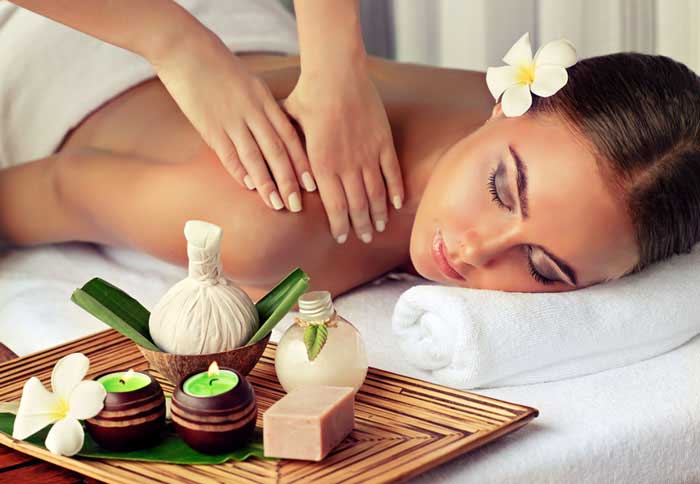Deep tissue massage, an ancient practice with roots extending thousands of years back, continues to demonstrate its efficacy in addressing both physical and psychological stress. Modern research has validated its benefits, particularly in managing conditions such as arthritis, anxiety, and chronic lower back pain. Despite its lesser-known status compared to other massage therapies, deep tissue massage stands out for its profound therapeutic impact.
For individuals who have explored various massage techniques without finding relief from persistent aches and tension, deep tissue massage may offer a solution. This form of massage therapy involves the application of firm pressure and slow strokes to targeted areas, aiming to penetrate deeper layers of muscle and fascia, the connective tissue enveloping muscles. The heightened pressure, while potentially uncomfortable, focuses on alleviating pain and tension over time, making it suitable for chronic conditions and areas with contracted muscles, such as a stiff neck, upper and lower back pain, tight leg muscles, and sore shoulders. It is also effective in treating chronic tension and overuse injuries like tennis elbow and carpal tunnel syndrome.
The mechanics of deep tissue massage share some similarities with Swedish massage and acupressure, particularly in stroke patterns. However, the defining difference lies in the intensity and focus. Deep tissue massage involves slower movements and greater pressure, concentrating on affected areas to break down scar tissue and muscle "knots" or adhesions. These adhesions, characterized by painful, rigid bands of tissue, can impede circulation, cause pain, and limit the range of motion and inflammation. By breaking down these adhesions, deep tissue massage improves circulation, reduces pain, and enhances mobility.
In practice, deep tissue massage begins with the application of light pressure to warm up the muscles, preparing them for deeper manipulation. The therapist employs specific techniques, the most common being the stripping and friction techniques. Stripping involves deep, gliding pressure along the length of the muscle fibers using the therapist’s elbows, forearms, knuckles, and thumbs. The friction technique, on the other hand, applies pressure across the grain of the muscle to release adhesions and realign tissue fibers.
The benefits of deep tissue massage extend beyond immediate pain relief. It is typically employed to address specific problems such as chronic muscle pain, injury rehabilitation, low back pain, limited mobility, recovery from injuries like whiplash and falls, repetitive strain injury, and postural issues. Additionally, deep tissue massage can help lower high blood pressure, alleviate arthritis symptoms, reduce stress, increase joint mobility, and diminish chronic pain. For optimal results, it is crucial to remain relaxed and trust the therapist’s ability to relieve pain.
Massage Techniques Comparison
Moreover, deep tissue massage stimulates blood flow, relieves muscle tension, and lowers psychological stress by releasing serotonin and oxytocin, hormones associated with happiness and relaxation. This holistic approach not only addresses physical discomfort but also enhances overall well-being.
Given the intensity of deep tissue massage, certain precautions are necessary. Individuals with a history of blood clots should avoid this therapy, as the massage might dislodge clots. It is advisable to consult with a healthcare provider if one is at risk of forming blood clots. Those who have undergone chemotherapy, radiation, recent surgery, or have other medical conditions should also seek medical advice before undergoing deep tissue massage. Additionally, individuals with osteoporosis should avoid this type of massage.
It is important to understand that deep tissue massage is primarily intended for therapeutic or rehabilitative purposes rather than relaxation. As such, some discomfort during and after the session is to be expected. The intensity of the pressure applied is necessary to achieve the desired therapeutic outcomes.
While deep tissue massage is highly effective for certain conditions, it is not the only massage therapy available. Other types include Swedish massage, known for its relaxation benefits and lighter pressure, focusing on improving circulation and easing muscle tension through techniques like effleurage, petrissage, and tapotement. Sports massage, tailored for athletes, aims to prevent and treat injuries, enhance performance, and aid recovery. It combines various techniques, including deep tissue and stretching, to address sport-specific concerns.
Shiatsu, a Japanese modality, involves applying pressure to specific points on the body, believed to balance the body’s energy pathways and promote healing. Hot stone massage incorporates the use of heated stones placed on the body to warm muscles and enhance relaxation. Prenatal massage caters to the unique needs of pregnant women, alleviating discomfort and promoting relaxation during pregnancy. Reflexology focuses on applying pressure to specific points on the feet, hands, and ears, believed to correspond to different body organs and systems, promoting overall health and well-being.
Each massage therapy offers distinct benefits, catering to different needs and preferences. Whether seeking relief from chronic pain, recovery from an injury, or simply a way to relax and de-stress, there is likely a massage therapy suited to one’s requirements. Exploring these various options can help individuals find the most effective approach to improving their physical and mental well-being.
In summary, deep tissue massage remains a powerful therapeutic tool with a rich history and proven efficacy in addressing various physical and psychological conditions. Its ability to penetrate deep muscle layers and fascia, break down adhesions, and promote circulation makes it particularly effective for chronic pain, tension, and overuse injuries. While it may cause some discomfort, the long-term benefits often outweigh the temporary discomfort. By following necessary precautions and consulting healthcare providers when needed, individuals can safely incorporate deep tissue massage into their wellness routines, reaping its numerous benefits for both body and mind.

